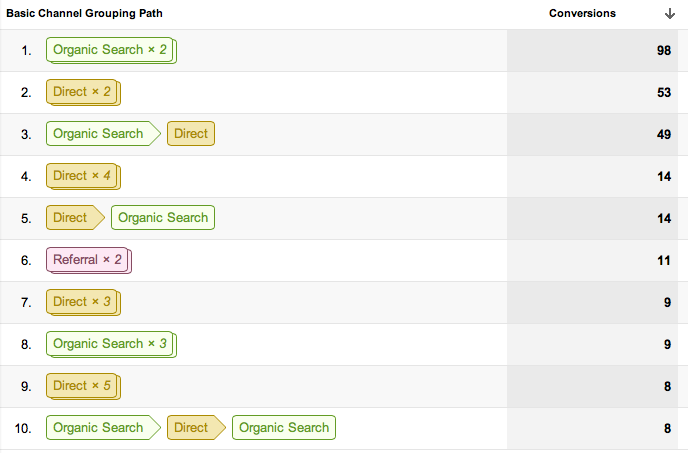Understanding What Data Is Google Analytics Goals Unable to Track
Understanding What Data Is Google Analytics Goals Unable to Track
Blog Article
Revealing the Blind Destinations: Recognizing What Google Analytics Goals Can not Gauge
In the world of digital analytics, Google Analytics stands as an effective device for tracking and assessing on the internet individual communications. Comprehending what Google Analytics goals can not gauge is vital for acquiring a comprehensive sight of user actions and interaction.
User Behavior on External Platforms
Recognizing how customers communicate on exterior platforms is critical for optimizing online approaches. External platforms, such as social media networks, recommendation sites, and on-line discussion forums, play a substantial role in driving traffic to a firm's internet site. By analyzing individual behavior on these platforms, services can gain useful understandings right into the performance of their marketing efforts and the preferences of their target audience.
One trick aspect of individual actions on outside systems is the referral source. By tracking where the individuals are originating from, businesses can identify which platforms are driving one of the most traffic to their internet site. This information can help business designate their sources better, concentrating on the systems that generate the finest results.

Offline Conversions and Communications
Evaluating customer actions on external platforms gives valuable insights into online techniques; nevertheless, thinking about offline conversions and interactions is similarly important for an extensive understanding of a business's overall efficiency. While Google Analytics succeeds at tracking online communications, it drops short in catching the complete customer trip that commonly consists of offline touchpoints. Offline conversions, such as in-store purchases or phone questions, play a substantial function in numerous businesses' success. Overlooking these communications can result in a distorted sight of the efficiency of marketing projects and general business efficiency.

Attribution Beyond Last Click
When diving right into the world of digital marketing analytics, it ends up being necessary to look beyond the single touchpoint of the last click for a more extensive understanding of acknowledgment. While Google Analytics gives valuable understandings right into customer actions, relying exclusively on last-click acknowledgment can be limiting - what data is google analytics goals unable to track. Acknowledgment models that go beyond the last click use a much more nuanced view of the client trip, taking right into account all the touchpoints that result in a conversion
Acknowledgment beyond the last click enables marketing professionals to designate debt to numerous communications along the conversion path, giving a clearer picture of the efficiency of different marketing networks. By checking out multi-touch attribution models such as straight, time decay, or position-based acknowledgment, services can better allocate their advertising and marketing budget plans and optimize their strategies for optimal effect.
Understanding the impact of each touchpoint in the conversion process is crucial for making notified decisions and maximizing ROI. By welcoming attribution past the last click, businesses can obtain deeper understandings into customer habits and tailor their advertising efforts better.
Cross-Device and Cross-Browser Monitoring

Likewise, cross-browser tracking complements cross-device monitoring by catching individual habits as they change in between various internet browsers. Understanding just how users connect with internet sites on numerous browsers can help marketing experts optimize their on the internet experiences to ensure consistency and capability across different platforms.
Qualitative Data and User Intent
Comprehending customer intent with qualitative information evaluation is essential for creating targeted electronic marketing methods that resonate with the needs and preferences of the target market. Qualitative information gives understandings right into the 'why' behind customer activities, shedding light on motivations, emotions, and choices that quantitative data alone can check my source not record. By assessing customer responses, remarks, and communications, marketing professionals can discover important information concerning individual intent, enabling them to customize their messaging, web content, and offerings to better align with what their target market is looking for.
Qualitative information additionally assists in understanding the context in which individuals involve with a web site or app. This contextual understanding allows marketers to develop even more pertinent and individualized experiences, inevitably driving greater engagement and conversion rates. By diving right into customer intent through qualitative information analysis, businesses can obtain a deeper understanding of their target audience, leading to more efficient advertising and marketing methods that fulfill individuals' needs and assumptions.
Verdict
To conclude, Google Analytics objectives have constraints in measuring customer habits on exterior platforms, offline conversions, acknowledgment beyond last click, cross-browser and cross-device monitoring, and qualitative information associated to individual intent. what data is google analytics goals unable to track. It is very important for businesses to be knowledgeable about these blind areas in order to supplement their information analysis with various other tools and approaches to acquire a much more detailed understanding Full Article of their target market and enhance their general electronic marketing approaches
By analyzing user actions on these systems, businesses can gain useful insights right into the effectiveness of their advertising efforts and the choices of their target audience.
Assessing customer actions on external platforms supplies important insights into on the internet methods; nevertheless, taking into consideration offline conversions and interactions is similarly crucial for a detailed understanding of a firm's general performance.In electronic advertising and marketing analytics, moving beyond last-click acknowledgment to explore cross-device and cross-browser tracking is important for obtaining an all natural understanding of individual interactions across different platforms and devices. By assessing individual feedback, comments, and interactions, marketers can reveal valuable information concerning user intent, allowing them to tailor their messaging, web content, and offerings to much better align with what their target market is seeking.
By delving into customer intent with qualitative data analysis, services can acquire a deeper understanding of Related Site their target audience, leading to extra reliable advertising approaches that fulfill individuals' expectations and demands.
Report this page